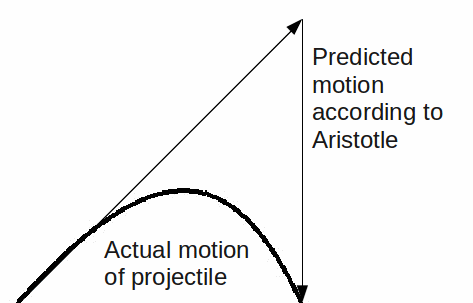Aristotle's theory of motion was based on thought and pure reasoning, these being held most highly in Greek culture. Aristotle drew a distinction between natural motion and violent or forced motion. Everything was made up of four substances – earth, water, fire and air. The natural motion of earth and water were down and the natural motion or air and fire were up.
He also described the natural motion of bodies in the following way:
-
heavier things fall faster, with speed being proportional to weight.
-
The speed with which a body falls is inversely proportional to the density to the medium it is falling through.
From the second statement he concluded a vacuum to be impossible, since it would have zero density, implying an infinite speed of descent.
For violent motion, he stated the the speed of an object to be proportional to the applied force. If you stop pushing an object it should stop moving. Though correct for many situations, especially where friction is involved, it does not explain projectile motion, which is a smooth curve.
Aristotle explained projectile motion in terms of a combination of violent and natural motion. When the violent motion 'runs out', the natural motion takes over and the stone falls to the ground.

